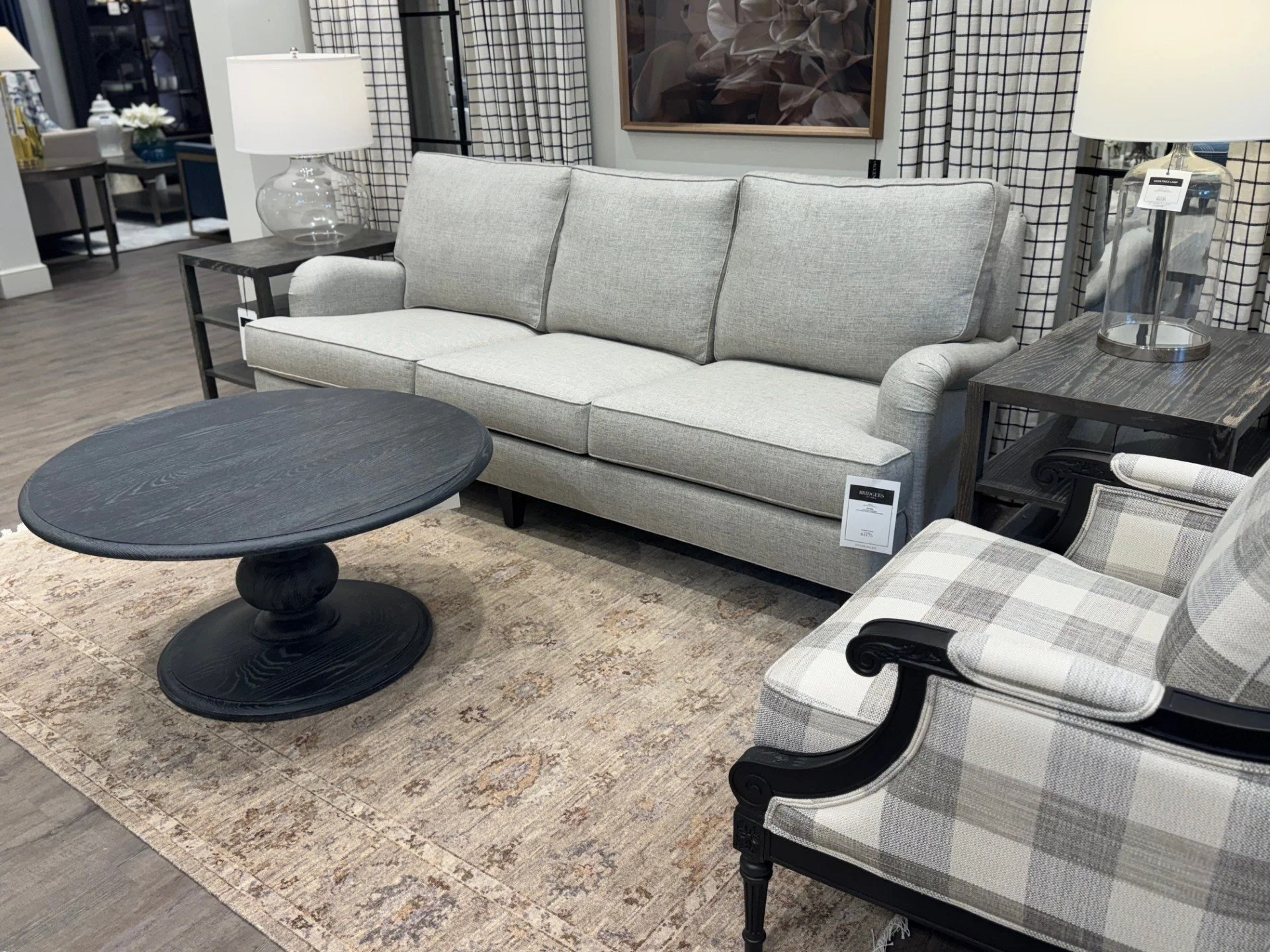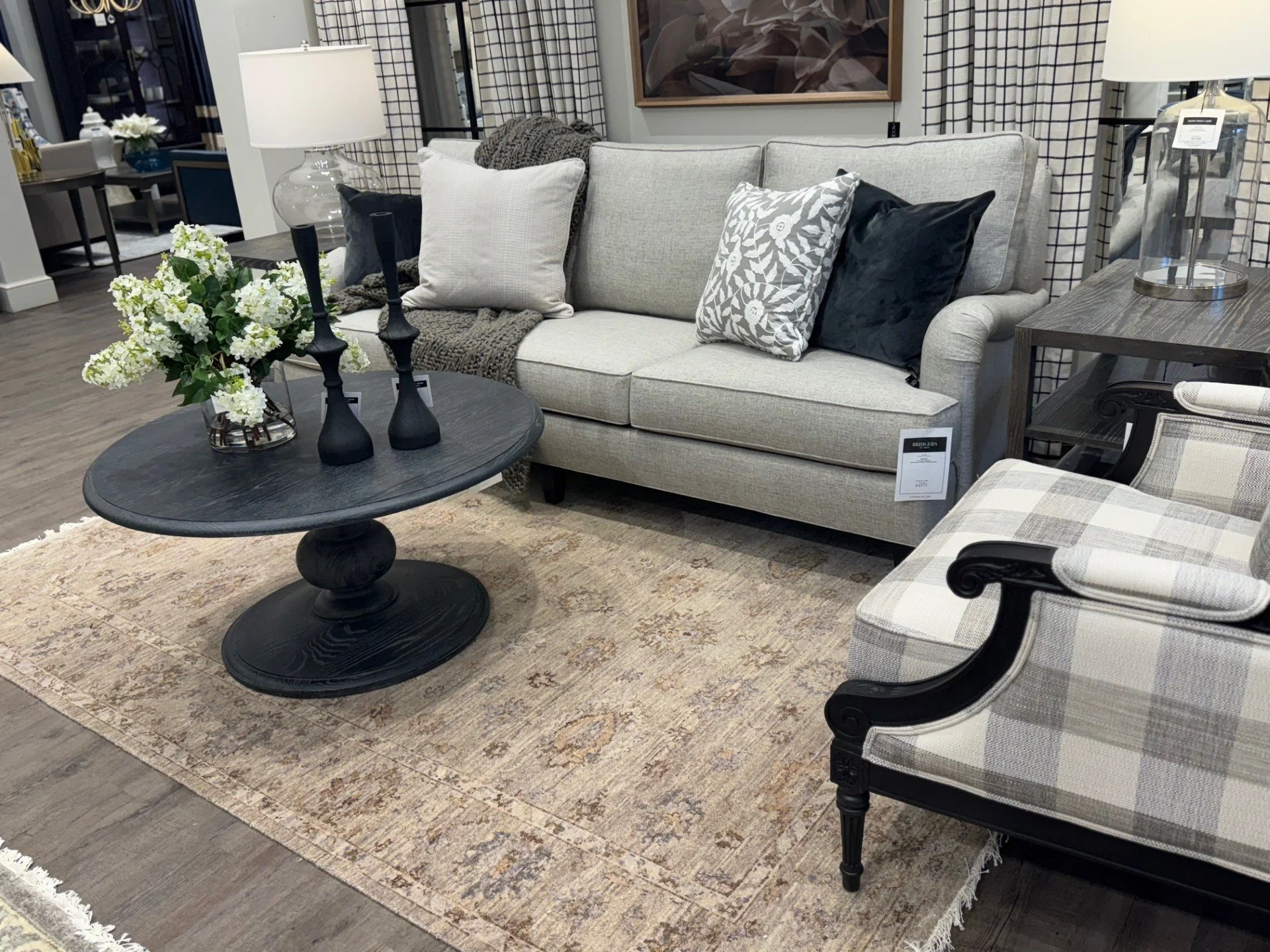Mini Guide: How to Mix Patterns & Textures
The Secret Sauce to Layering Like a Designer
When you walk into a beautifully designed room, it doesn’t take long to notice that something just feels… right. The colors are harmonious, the furniture is inviting, and there’s this magical balance of comfort and style. But if you look closely, what really makes the space sing is often the mix of patterns and textures.
The “secret sauce” of decorating is that extra layer that transforms a basic room into a personality-filled haven. And here’s the good news: you don’t need a design degree to pull it off. With a few simple tips (and a little courage to play), you can start layering like a pro.
So grab your throw pillows and coffee table books, and let’s dive in!
Why Patterns & Textures Matter
Think of your room like an outfit. If you wore denim jeans and a denim shirt and a denim jacket, you’d be rocking the Canadian tuxedo—but also maybe looking a little flat. Now swap in a soft knit sweater, a leather jacket, and maybe a printed scarf. Instantly, you’ve got depth, contrast, and interest.
Your home works the same way. Patterns bring energy, movement, and personality, while textures create depth and comfort. When combined, they make a space look intentional, layered, and lived-in. Without them? The room risks feeling one-dimensional and unfinished.
Pro tip: If your space feels “blah,” chances are you need to mix in more variety.
Step 1: Start with a Solid Foundation
Before you dive headfirst into bold patterns, set yourself up with a neutral base. This could be your sofa, walls, or large area rug. A foundation of solids (think cream, gray, beige, or even muted navy or green) gives your patterns room to shine.
If everything in the room is competing for attention, it gets overwhelming. A balanced base is like giving your patterns a stage—they can perform without stealing the entire show.
Think of it like baking: the cake is your foundation, and the patterns and textures are the frosting and sprinkles. Mmmmm…cake.
Step 2: Mix Scale, Not Just Patterns
Here’s where a lot of people get tripped up. Mixing patterns isn’t about throwing five florals into one room and hoping for the best. The trick is to vary the scale.
Large-scale patterns (like oversized florals or wide stripes) anchor the space and make a statement.
Medium-scale patterns (like geometric prints or plaids) provide balance.
Small-scale patterns (like tiny dots, checks, or subtle textures) add detail and keep the mix from feeling too loud.
By combining different scales, you give the eye a rhythm: bold, medium, subtle. Without that rhythm, everything competes and the room feels chaotic.
It’s kind of like music: you need the bass, the melody, and the harmonies to make a song work.
Step 3: Balance Bold with Subtle
If you love bold patterns (and I know some of you do!), the key is to give them breathing room. A dramatic wallpaper looks incredible paired with simple solid furniture. A busy patterned rug comes alive when layered under neutral seating.
Think of bold pieces as your star performer—you don’t need three spotlights on the stage. Pairing them with subtler companions lets them shine.
And if you’re nervous about being “too much,” just remember: you can always start small with accessories. Throw pillows, drapery, or even a patterned lampshade are easy, low-commitment ways to play.
Step 4: Don’t Forget Texture
Here’s the step most people skip. Patterns are fun, but without texture, a room can still feel flat. Texture brings in that irresistible touchable quality—think chunky knit throws, linen drapes, velvet pillows, woven baskets, or a natural jute rug.
When you mix smooth surfaces (like leather or glass) with cozy ones (like boucle or wool), you instantly add dimension.
Bonus: textured elements tend to be timeless, so they’ll outlast pattern trends.
Step 5: Create a Color Story
All the pattern mixing in the world won’t save you if the colors clash. The easiest way to tie everything together is to stick with a cohesive color palette.
Pick 2–3 main colors, then weave them through your patterns and textures. For example, if you’re going for blues and neutrals, you might use a navy striped rug, a floral pillow with hints of blue, and a textured cream throw. The patterns are different, but the colors connect the dots.
Want a designer trick? Pull inspiration from a piece of art or a rug (or a shoe!) you love. Use its palette as your roadmap, and everything else will fall into place.
Step 6: Layer Like You Mean It
Now for the fun part: layering! Start with your big pieces (sofa, rug, bedding), then build on top with medium items (pillows, curtains, accent chairs), and finish with small accents (throws, accessories, artwork).
Each layer adds another touch of depth. The more layers, the cozier and more polished the space feels. And don’t be afraid to try combinations you’re unsure about—sometimes the “oops” pairing ends up being your favorite.
Remember: decorating isn’t about rules, it’s about creating a home that feels like YOU.
Common Mistakes to Avoid
Before you run off to redecorate, here are a few quick “don’ts”:
Too many stars: If everything is bold, nothing stands out. Balance is key.
Ignoring texture: Flat surfaces everywhere = flat vibe.
Color chaos: Keep a clear color palette so things feel cohesive.
One-and-done: Don’t stop at one pattern. The magic comes from the mix.
Final Thoughts: Your Secret Sauce
Mixing patterns and textures might feel intimidating at first, but once you start, it’s actually a lot of fun. Think of it like cooking—you taste, adjust, and add a little more spice until it feels right.
And remember, there’s no “wrong” way if the result makes you happy. Whether you’re layering cozy knits in your bedroom, combining graphic pillows in your living room, or trying out that bold rug you’ve been eyeing—trust yourself.
Because at the end of the day, the best design recipe is the one that feels like home.








